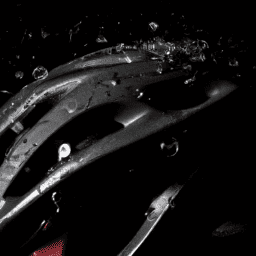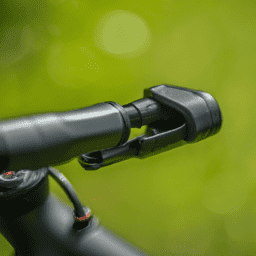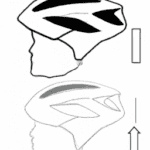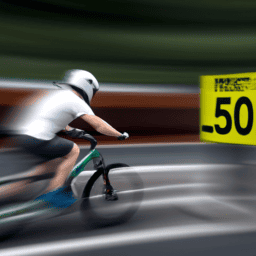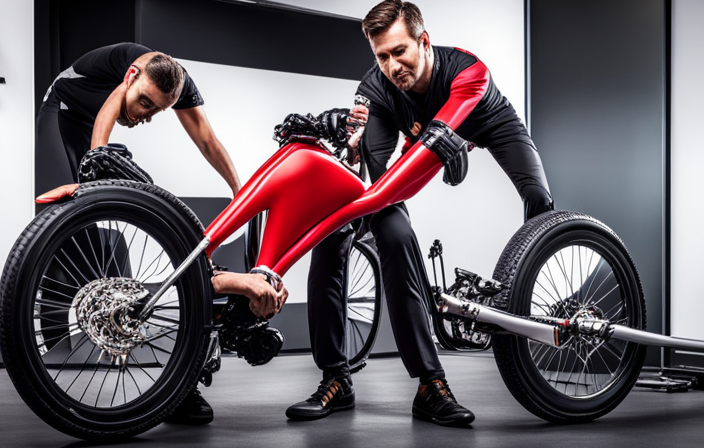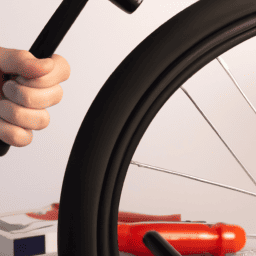Were you aware that using a helmet when biking can lower the chance of sustaining a head injury by as much as 85%? This is an astonishing figure, emphasizing the critical necessity of donning a helmet each time you ride your bicycle.
But just as important as wearing a helmet is keeping it clean and well-maintained. In this article, I’ll walk you through the steps of how to wash your bicycle helmet, so you can keep it in top condition and continue to ride safely and confidently.
As someone who cycles regularly, I know firsthand how dirty a helmet can get after just a few rides. Sweat, dust, and grime can all accumulate on the exterior and interior of the helmet, making it not only unsightly but also potentially smelly and unhygienic.
By taking the time to wash your helmet properly, you can not only extend its lifespan but also ensure that it continues to provide the protection you need on the road. So let’s dive in and learn how to give your helmet a good cleaning!
Key Takeaways
- Regular cleaning and maintenance of a bicycle helmet is important to ensure maximum protection.
- Use mild soap or specialized helmet cleaning solutions and a soft brush to clean the exterior of the helmet.
- Removing the helmet padding and cleaning it separately is important for deep cleaning.
- Proper storage in a cool, dry place away from sunlight and sharp objects is crucial for maintaining the helmet’s integrity.
Gather Supplies
Now it’s time to grab your supplies and get ready to give that helmet a good scrubbin’! First things first, you’ll need to choose an appropriate detergent for the job. Avoid using harsh chemicals or anything abrasive that could damage the helmet’s shell or padding. Instead, opt for a mild dish soap or a specialized helmet cleaning solution. These will effectively clean the helmet without causing any harm.
Next, gather a soft bristled brush to use on the helmet’s exterior. This will help scrub away any dirt or grime that has accumulated on the shell. Be sure to choose a brush that is gentle enough to avoid scratching the helmet’s surface.
And with that, you’re ready to move on to the next step: removing the helmet padding.
Remove the Helmet Padding
First, you’ll wanna take out the squishy bits inside the lid. Don’t worry, they’ll pop right out! Removing the helmet padding is important because it allows you to deep clean the helmet effectively. To remove the padding, gently pull on the edges of the padding until it comes loose. Some helmets have velcro or snap buttons that attach the padding to the helmet, so be sure to check for those as well.
Once you’ve removed the padding, it’s time to prepare your cleaning solutions. You can use mild soap and warm water to clean the padding, or you can use specialized helmet cleaning solutions that are available in bike shops. It’s important to avoid harsh chemicals or abrasive cleaners that could damage the padding. After preparing your cleaning solution, dip the padding in the solution and gently scrub it with your hands. Rinse the padding thoroughly with clean water and let it air dry. With the padding removed, it’s time to move on to washing the helmet and padding together.
Note: It is important to follow the manufacturer’s instructions when cleaning your helmet to ensure that you do not damage any of its components.
Wash the Helmet and Padding
After removing the padding, you’ll want to give both the helmet and padding a thorough cleansing to ensure they’re free of dirt and sweat. There are several cleaning methods you can use depending on the type of helmet you have.
For most bicycle helmets, a mild soap and warm water solution will do the trick. Make sure to avoid using any harsh chemicals or abrasive materials that could damage the helmet’s shell or padding.
To wash the helmet, dip a soft cloth or sponge into the soapy water and gently wipe the surface of the helmet. Pay special attention to any areas where sweat or dirt may have accumulated, such as the chin strap or vents.
For the padding, you can either hand wash it in the sink or machine wash it on a gentle cycle. Be sure to follow any manufacturer instructions for washing the padding.
Once you’re finished washing both the helmet and padding, rinse them thoroughly with clean water and then allow them to air dry.
With the helmet and padding now clean and fresh, it’s time to move on to the next step: drying them.
Dry the Helmet and Padding
Once the helmet and padding have been thoroughly cleansed, it’s time to let them air dry before putting them back together, giving them time to ‘dry out’ completely.
Here are some tips on how to effectively dry your helmet and padding:
-
Air drying is the best way to dry your helmet and padding. Find a well-ventilated area and leave your helmet and padding to dry naturally. Avoid exposing them to direct sunlight or heat sources as this can cause damage to the helmet’s materials and shape.
-
If you need to speed up the drying process, use a clean and dry towel to gently pat down the helmet and padding. Avoid rubbing vigorously as this can also cause damage to the materials.
-
Make sure to remove all excess water from the helmet’s ventilation holes and padding by using a towel or shaking them out.
-
Once the helmet and padding are completely dry, it’s time to reassemble the helmet and store it properly.
With these tips, you can effectively air dry your helmet and padding, ensuring that they’re clean and ready to use for your next ride.
Reassemble the Helmet and Store Properly
To keep your helmet in top condition and ready for your next adventure, it’s important to properly reassemble it and store it in a safe place.
Once the helmet and padding are completely dry, reattach the padding and any removable pieces to the helmet. Make sure all the straps are properly adjusted and secured. Finally, give the helmet a quick inspection to ensure it’s reassembled correctly.
Proper storage is also important to maintain the integrity of your helmet. Store your helmet in a cool, dry place, away from direct sunlight and extreme temperatures. Avoid storing it near anything that may damage the helmet, such as sharp objects or chemicals.
Additionally, avoid hanging the helmet by its straps as this may cause them to stretch or weaken over time.
By following these simple maintenance tips, you can ensure your helmet stays in top condition and provides maximum protection for years to come.
Frequently Asked Questions
Can I wash my helmet in the washing machine?
I wouldn’t recommend washing a helmet in a washing machine. The agitation and heat could damage the helmet’s structure. Instead, I suggest hand washing with mild soap and water. Consider using a helmet liner for easier cleaning.
Is it safe to use a hair dryer to dry my helmet?
Drying a helmet with a hair dryer is like using a leaf blower on a small object. It can be effective but dangerous. The pros include quick drying time but the cons are potential damage to the helmet. Alternative methods include air drying or using a fan.
What can I use to remove stubborn stains from my helmet?
To remove stubborn stains from my helmet, I can try DIY solutions like using baking soda or vinegar. If those don’t work, I could consider professional cleaning services. To prevent stains, I’ll make sure to clean my helmet regularly and avoid leaving it in direct sunlight.
How often should I wash my helmet?
I always aim to keep my helmet spotless and fresh, even if it means washing it every week. Proper helmet storage is crucial to prevent odor and damage. For cleaning, adjust it to different weather conditions and follow helmet cleaning tips.
Can I use bleach or other harsh chemicals to clean my helmet?
No, using harsh chemicals like bleach is not recommended for cleaning a helmet. Alternatives like mild soap and water, vinegar, or baking soda can be used. Safety considerations include avoiding abrasive materials and ensuring the helmet is completely dry before use.
Conclusion
So there you have it, folks! That’s how I wash my bicycle helmet and keep it clean and fresh for every ride. It’s a simple process that doesn’t take too much time or effort, and it’s well worth it for the safety and comfort of your head.
Now, I know some of you might be thinking, "But what about the chemicals in the detergent? Won’t they damage the helmet or the environment?"
That’s a valid concern, and I understand the importance of being environmentally conscious. That’s why I always use a mild, biodegradable detergent that won’t harm the helmet or the ecosystem. Additionally, I make sure to rinse the helmet thoroughly with water to remove any residual soap or chemicals.
By taking these precautions, I can ensure that my helmet stays clean and safe without compromising my values. So go ahead and give it a try – your head (and the planet) will thank you!
